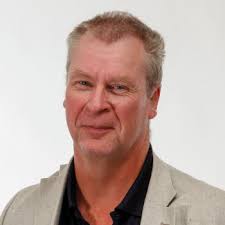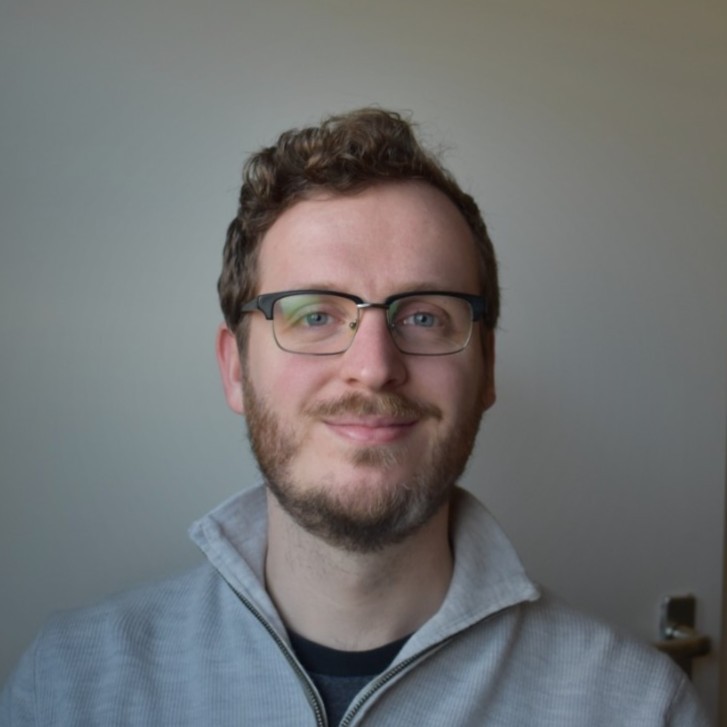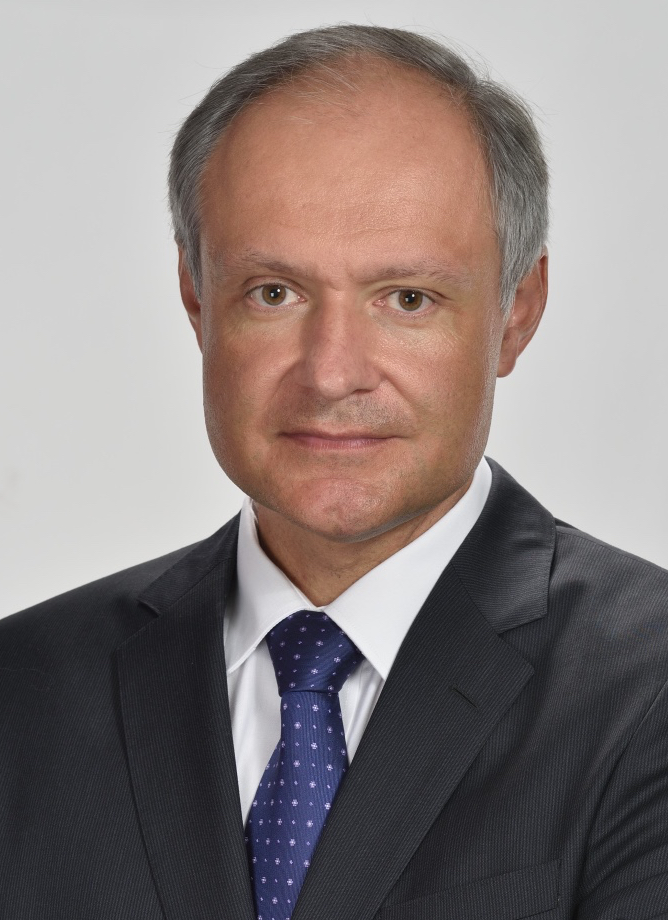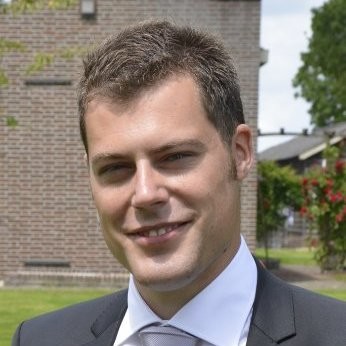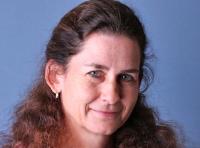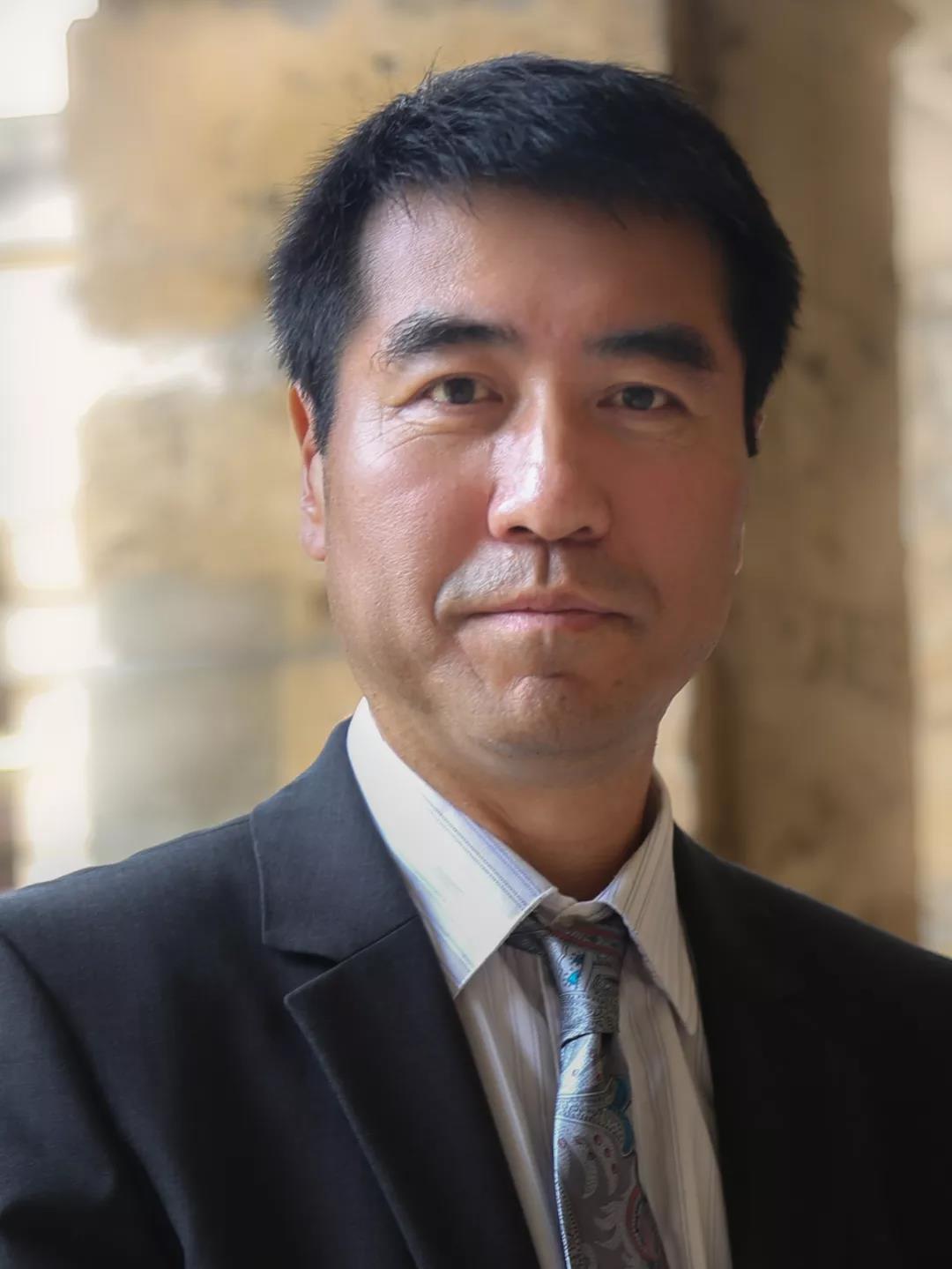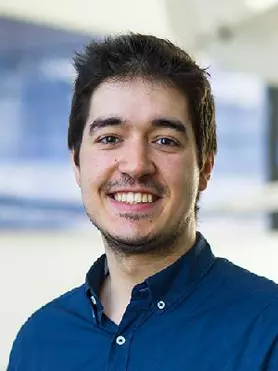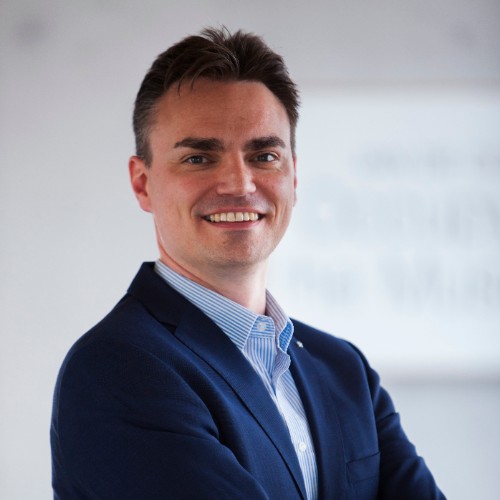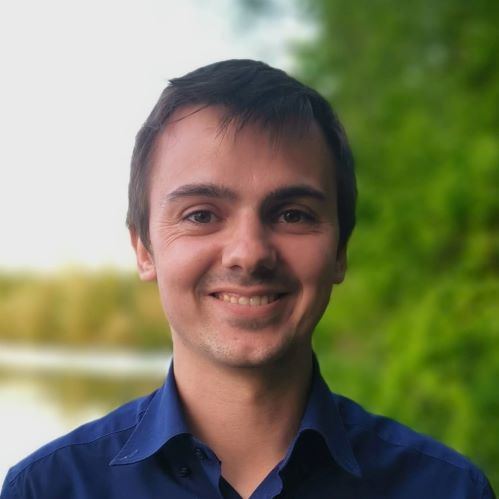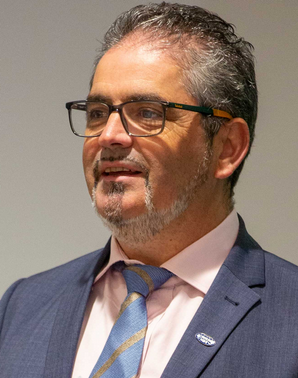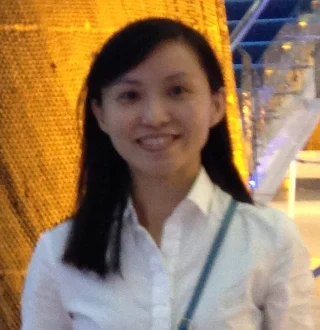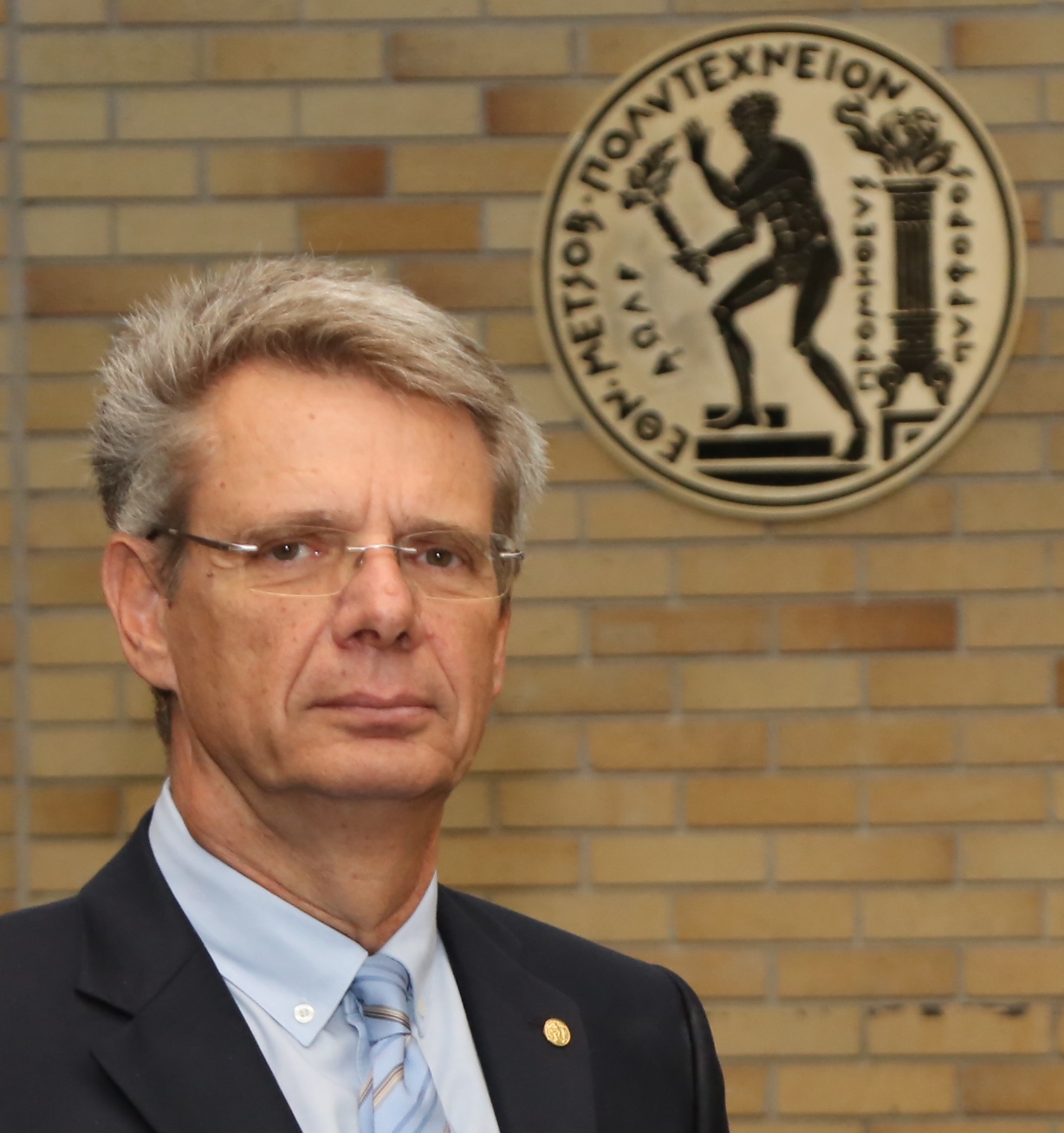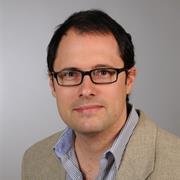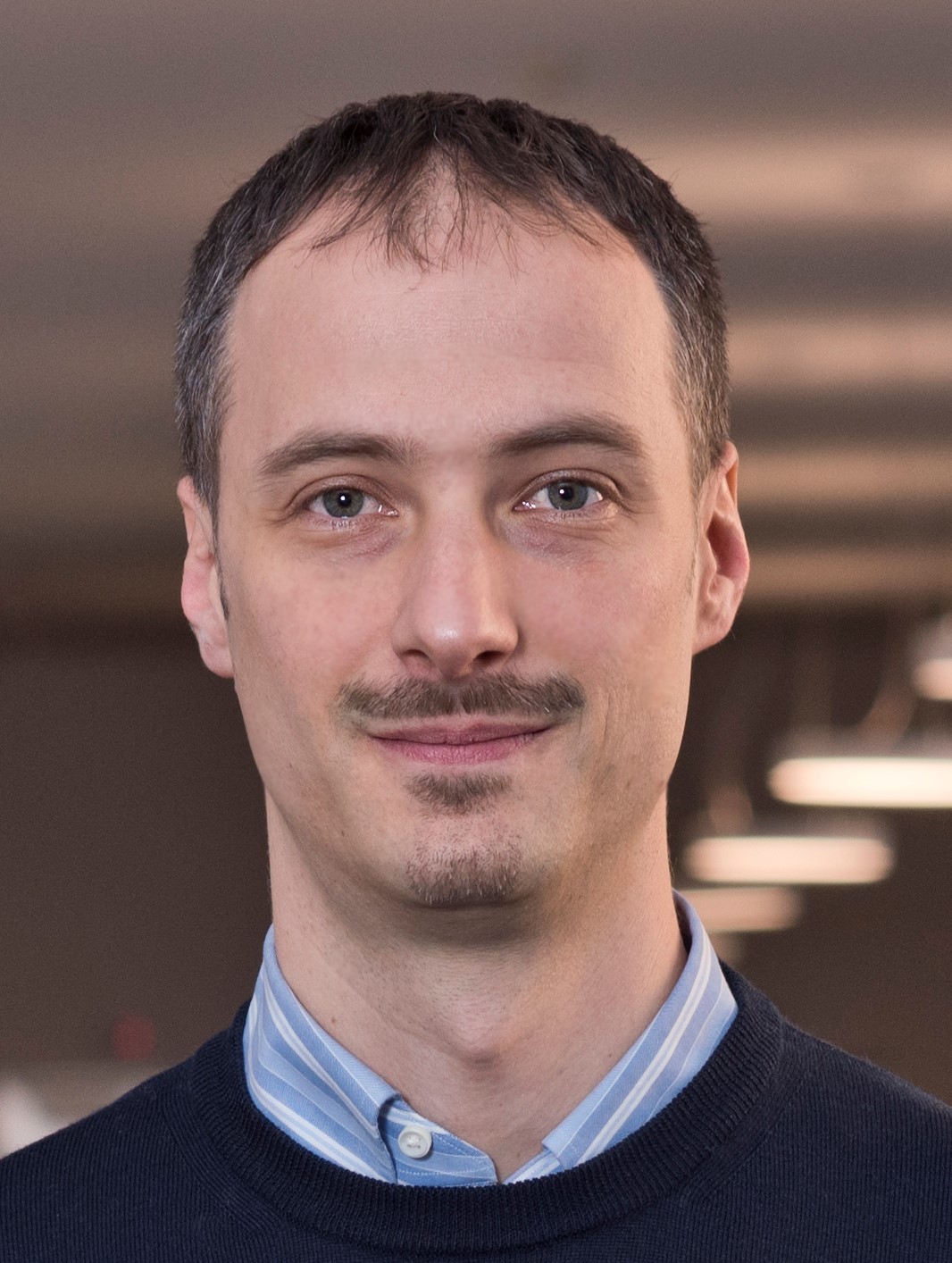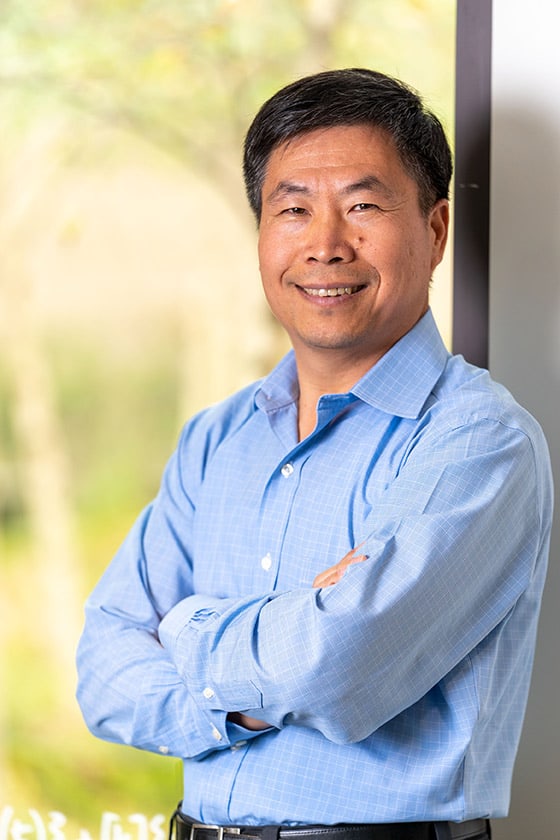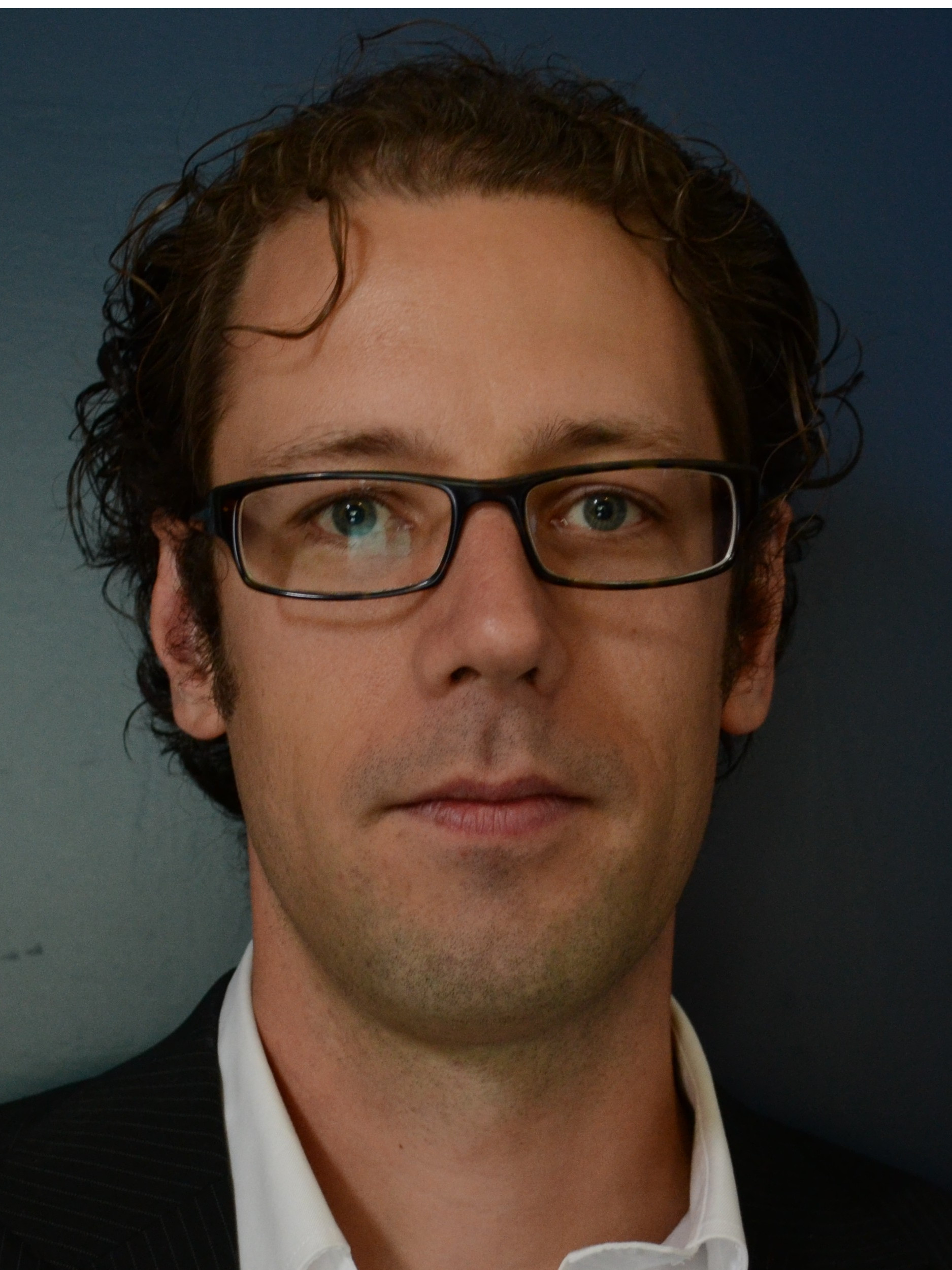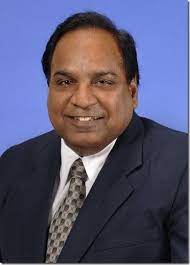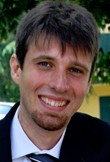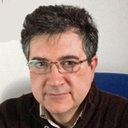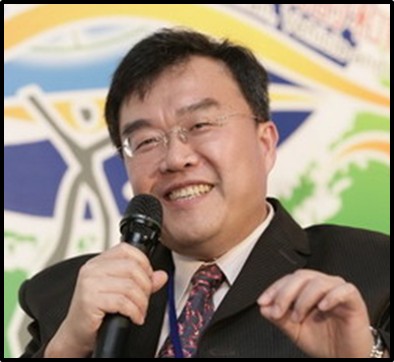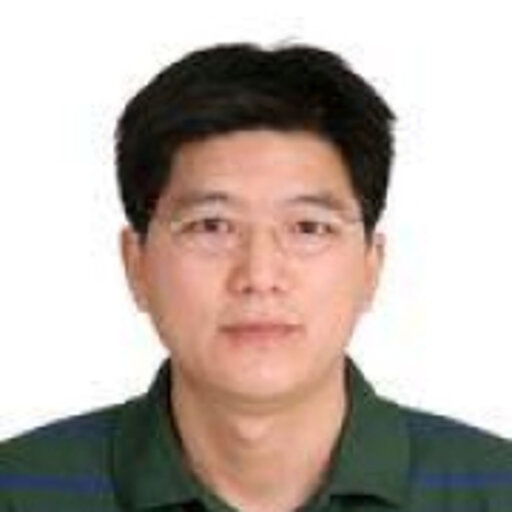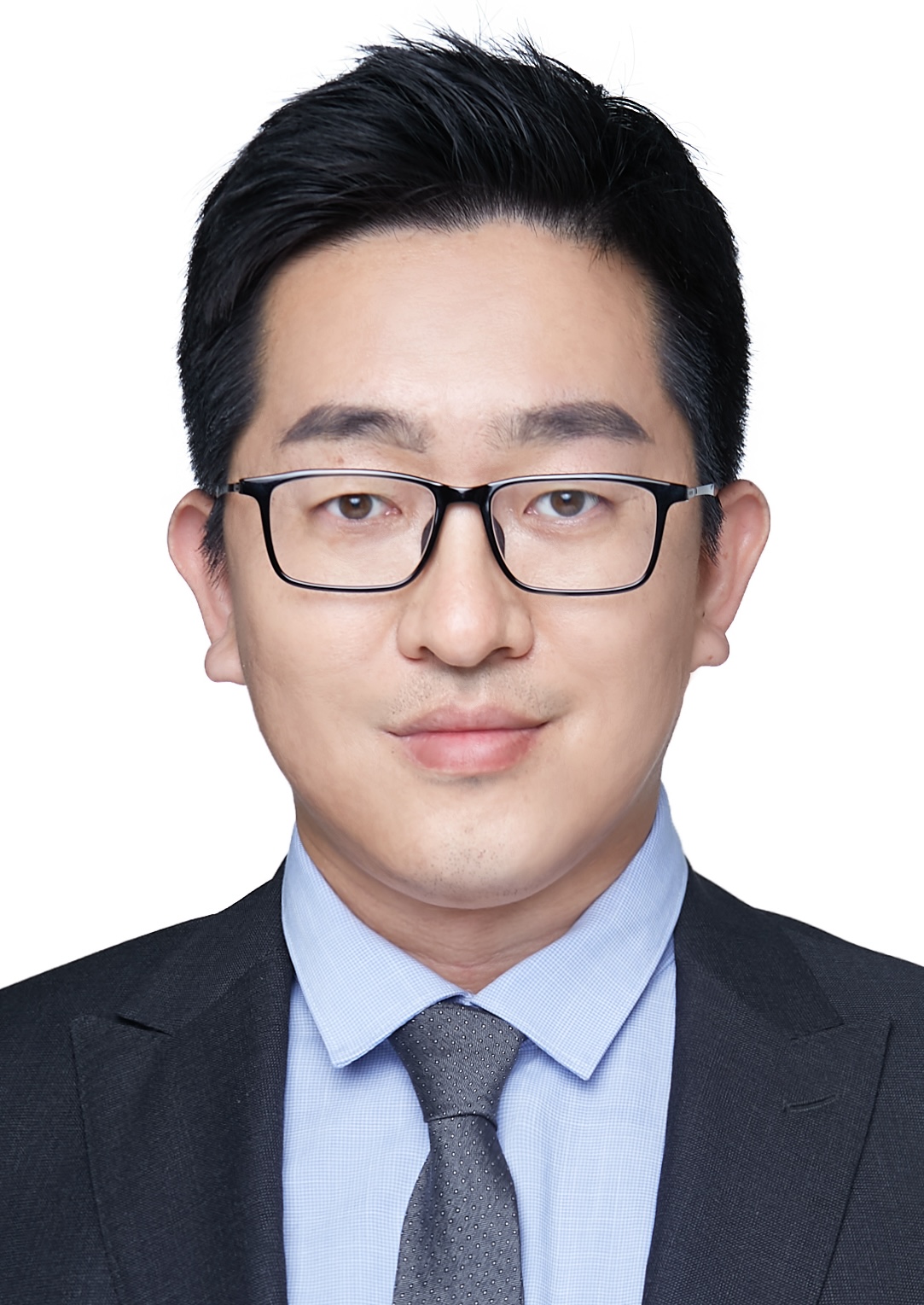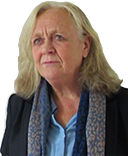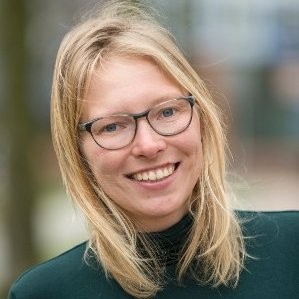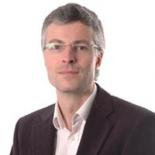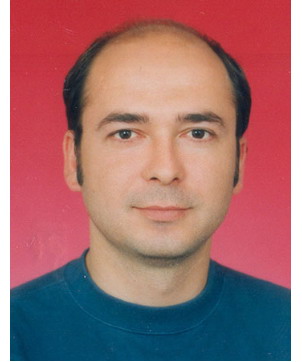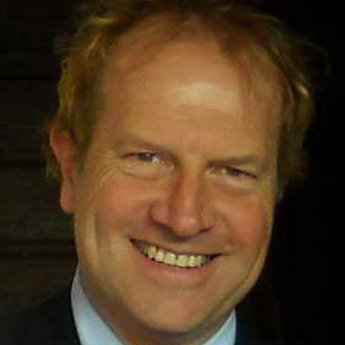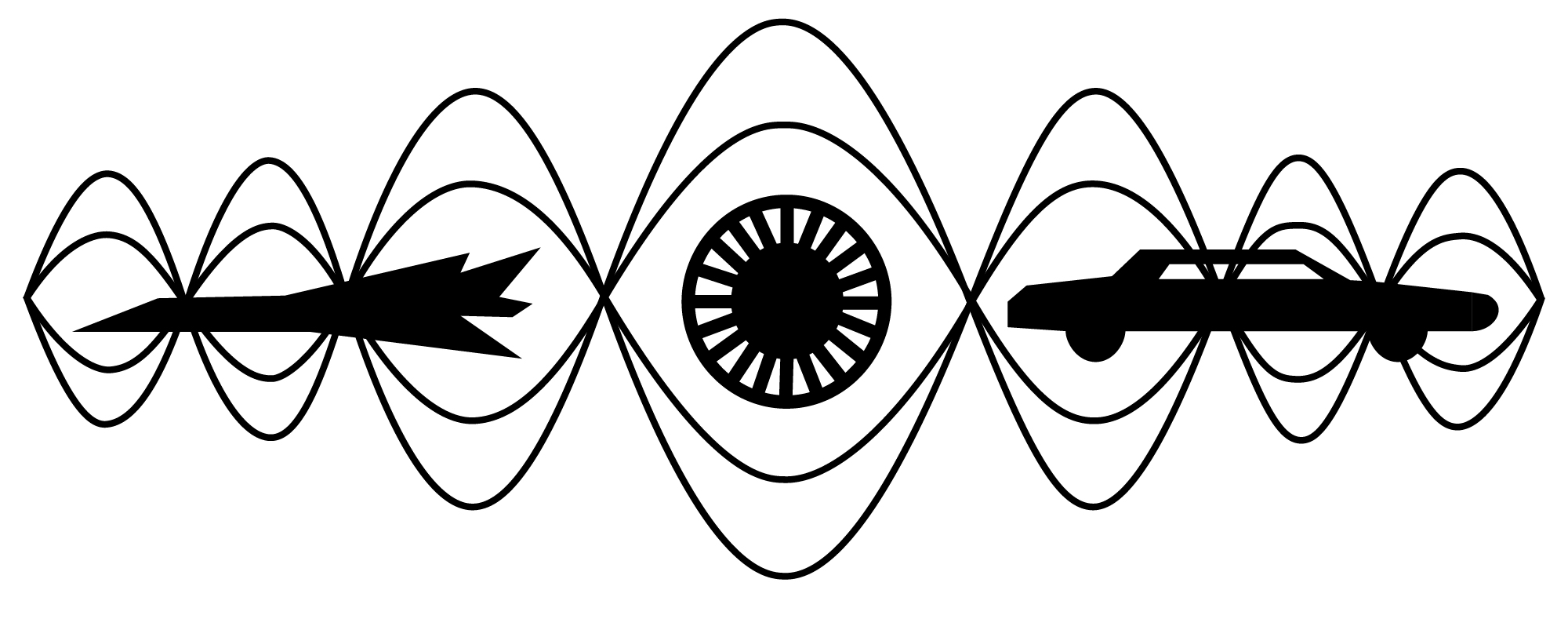- Homepage
- Scope of the congress
- Congress Venue
- Local Organising and Scientific Committees
- International Organising Committee
- International Scientific Committee
- Brochure and Video
- Distinguished Plenary Lectures
- Programme
- Scientific Programme
- Exhibitors & Sponsors
- Student Paper Award
- Social Events
- Publication Ethics and Malpractice Statement
- Editorial policy
- Contact Us
- IIAV
Abstracts can be submitted to the Structured and Regular Sessions. The Congress Organisers reserve the right to shift accepted abstracts between sessions.
Structured Sessions are organised by scientists of acknowledged reputation who define the scope of the sessions, personally invite authors, review abstracts of contributed papers, schedule the papers, and finally chair the sessions.
List of the Structured Sessions:
| T01 SS01 | Sound and vibration measurements and analysis |
The purpose of this structured session is to report on the latest research and development works carried out in the field of sound and vibration measurements, and analysis. Papers presented in this session can focus on experiments carried out in research laboratories or in practical installations in vehicles or in industrial applications, etc. The papers can, for example, treat sensor technology, transducers that consists of a combination of sensor/sensors and signal processing for sound and vibration measurements, measurement and analysis of sound and vibration in new applications areas or in challenging applications. Papers may also concern new norms on sound and vibration quantities and their purpose, and new or useful information and/or quantities extracted from sound and vibration signals. |
|
| T01 SS02 | Measurement techniques and sensors |
This session covers all aspects related to the measurement techniques and sensors for sound and vibration. Reflecting the current state of the art, the session includes applications of traditional measurement techniques and sensors for performing practical measurements in acoustics and vibration, concepts and proposals of new measurement techniques and sensors with associated hardware and software, and the development of new measurement systems with the incorporation of standards for sound and vibration. |
|
| T01 SS03 | Detection and Tracking of Moving Objects |
The purpose of this session is to provide a forum for those studying acoustic detection and tracking of moving objects. One specific example is the unmanned airborne vehicle (drone) which emits distinctive sound that can be monitored passively and potentially covertly. Another example is distributed road vehicle monitoring. Some specific scientific issues are the reliability and resolution of tracking, coordination of information between sensors and the exploitation of machine learning in this domain. |
|
| T02 SS01 | Actuators and sensors for active control |
Actuators and sensors often constitute key components of an active noise and vibration control system that will determine the overall performance of the active system. Aspects such as actuator and sensor placement, sensitivity, authority, linearity, robustness, and cost are of importance in an active control system. This structured session will address recent research on traditional or new transduction technologies in active control. |
|
| T02 SS02 | Algorithms for active control |
This structured session continues the series of sessions on this topic at previous ICSV conferences. The purpose of this session is to report recent research on algorithms, signal processing and hardware implementation for active noise and vibration control. The latest advancements addressing linear and nonlinear control, algorithmic and signal processing optimization for efficient and robust real-time implementation as well as new processing platforms are welcome. Both fundamental aspects and practical issues related to algorithms for active control will be covered.
|
|
| T02 SS03 | Active meta-materials |
Acoustic metamaterials are engineered structures designed in such a way to exhibit acoustic properties not readily available in nature. One of the main issues of such artificial structures is the limited bandwidth over which the acoustic properties can be tweaked out. To overcome this, active control techniques have been identified as an enabler, driving a significant part of the scientific community towards the development of active metamaterials. This structured session aims at providing a snapshot of the research on active metamaterials and metasurfaces, through the presentation of theoretical and experimental investigations, highlighting the practical applications of such concepts.
|
|
| T02 SS04 | Electro Acoustics |
|
| T03 SS01 | Acoustic simulation, test and control in spacecraft |
The spacecraft design is heading towards the direction of ultra-high speed, large scale, and multi-function with the gradual implementation of the major projects in aerospace engineering, its launching and operating environment is likely to worsen. The spacecraft needs to withstand extremely complex and harsh dynamic environment during the launch process. This session aims to bring together scientists with an academic and/or industrial background in this area. The suggested topics include but are not limited to the following: modelling and prediction of vibration and acoustics using numerical methods, nonlinear effects, equivalence theory between acoustic and vibration test and application, acoustic fatigue as well as a variety of acoustic and vibration control method including active and passive, boundary condition modelling and measurement, propagation mechanism of shock waves in structure, various advanced test methods, etc. All papers giving insight on vibration and acoustic simulation, test and control in spacecraft are welcome. |
|
| T03 SS02 | Passive control of aeroacoustic and thermoacoustic instabilities |
Passive methods, such as acoustic liners and Helmholtz resonators, are efficient to control the noise and instability. This session invites papers on passive control of aeroacoustic and thermoacoustic instability. The investigations in this structured session can cover the latest development in theoretical, numerical and experimental approaches concerning control methods for aeroacoustics, involving (but not limited to) fan noise, jet noise, aircraft noise, wind tunnel noise, vortex-sound resonance and thermoacoustic instability. |
|
| T03 SS03 | Combustion noise and thermoacoustics |
Unsteady combustion generates sound. A particularly violent form of combustion noise tends to arise if the combustion takes place in an acoustic resonator, because then the heat release rate and the sound field can interact in such a way that they amplify one another, generating a "thermoacoustic instability". This can lead to structural damage in gas turbine combustors and some types of aircraft, so avoiding thermoacoustic instabilities is paramount. They are a complicated phenomenon, involving sound waves, combustion, aerodynamic effects and structural waves, as well as the interaction between all these. This session aims to bring together scientists with an academic and/or industrial background in this area. With its focus on fundamental aspects of thermoacoustics, it complements the session T03 SS07 "Dynamics and acoustics in sprays, liquid fuel flames and aero engine combustors", which focuses on the engine applications and which is organized by Jim Kok.
|
|
| T03 SS05 | Airfoil/High-Lift Device Noise |
Aircraft noise has received growing attention recently due to the ongoing expansion of the aviation sector and the ever-more stringent regulations on noise emissions worldwide. Airframe noise is significant during the approach in which the main noise sources include the airfoils and high-lift devices. Airfoil self-noise is also the main source of aerodynamic noise for many industrial fluid types of machinery, and the aerodynamic noise from the airfoils of wind turbines, unmanned aerial vehicles, and ventilation/cooling fans presents further challenges. The development of noise-reduction technologies requires an in-depth understanding of the noise generation mechanisms. This Structured Session calls for quality original research works and/or innovative design concepts, and aims to showcase the latest developments in theoretical, numerical, and experimental investigations of the source mechanisms and control methods for airfoil/high-lift device noise. The topics of the Structured Session cover the latest advances in all aspects of the generation and reduction of airfoil/high-lift device noise to advance knowledge in understanding the source mechanisms and developing novel control techniques of airframe noise, as well as applying these noise suppression technologies in other scenarios and industries. |
|
| T03 SS06 | Aircraft and gas turbine engine noise in the transition to sustainable fuels |
The structured session on aircraft engine noise invites papers related to all aspects of aircraft engine noise control, such as fan noise, nacelle liner technology, nacelle morphing technology, combustor noise, mixer technology, shock cell noise or propeller noise. All papers giving insight into engine noise propagation to aircraft structure or landscape for cabin noise or community noise are also welcome.
|
|
| T03 SS07 | Passive control of thermoacoustic instabilities |
Thermoacoustic instabilities pose great threat to combustion systems as they are large amplitude pressure oscillations which can cause structural damage. Often, these instabilities are mitigated through passive acoustic dampers like acoustic liners, Helmholtz resonators or quarter- and half- wave resonators. This structured session invites papers on passive control of thermoacoustic instabilities; and is not limited to just the use of acoustic liners and resonators. It could also be design modifications, utilisation of existing phenomena like heat exchanging etc, to name a few. We invite theoretical, numerical and experimental studies (including validation studies) that effectively dampen instabilities in combustion systems. |
|
| T03 SS08 | Aircraft noise measurements for validation of regulatory models |
The impressive growth shown by the aviation industry has given rise to important economic benefits, but this also comes at the price of, among other things, potentially high aviation-induced noise levels, resulting in annoyance and health problems. Therefore, in many countries, regulations are implemented by imposing limits on the yearly cumulative noise levels at locations around airports. These levels are determined using best-practice models (or regulatory models), such as DOC29. With such models, noise contours around airports can be calculated with low computational costs and limited model inputs. This way of noise monitoring comes with significant model approximations and hence deviations of model predictions from the actual noise levels. The limitations of this current approach have given rise to distrust in communities located close to airports. Therefore, validation of the regulatory models using real measurements is of crucial importance, i.e. by comparing the (yearly averaged) modelled Lden and Lnight values with those measured at various locations. Also, model validation at the single event level, e.g. comparing measured and modelled SEL values, is highly desirable. In addition, these validation efforts are important for testing potential noise level reductions due to the introduction of new and less noisy aircrafts and the implementation of noise abatement flight procedures. |
|
| T03 SS09 | Dynamic transitions and effects of noise |
This session will focus on the dynamics of thermoacoustic and aeroacoustic systems during their transition from stable to unstable states as well as between periodic and aperiodic states (e.g. quasiperiodic, intermittent, and chaotic states). Special attention will be given to how such transitions could be influenced by noise and how they could be related to events such as flame flashback/blowoff in combustion chambers, stall of an airfoil, and more. |
|
| T03 SS10 | Turbomachinery noise |
The session is dedicated to the aerodynamic noise of rotating-blade technology, including theoretical, numerical and experimental aspects. The variety of flow regimes in the covered topics, from low-speed to transonic, and from free-field to ducted machines, is the occasion of reviewing basic mechanisms and recent methodological advances. |
|
| T03 SS11 | Data-driven methods in thermoacoustics |
This session will be focused on both fundamental development and practical application of data-driven methods in thermoacoustics. Examples of methodologies are machine learning, physics-informed machine learning, data assimilation, Bayesian methods, and more. Examples of applications are modelling and prediction of nonlinear thermoacoustic regimes, design optimization and control of oscillations, prediction and precursors of instabilities, and more. |
| T03 SS12 | Propeller Noise |
The noise and its perception of an aircraft is a crucial factor in attaining community and regulatory acceptance. Thus, in the recent development of quieter, more sustainable aerial vehicles from short-to-medium-haul jetliners to urban air mobility, understanding and accurate prediction of propeller noise, as the primary element in the propulsion configurations, has become increasingly important and an integral part of the design process. In this session, we aim to include the latest research and development work on propeller noise in its broad definitions, which include analytical, numerical, and experimental investigations of the isolated propeller/rotor noise as well as in the installed configurations; moreover, works on examining the propagation and impact of the propeller noise on the community are also highly encouraged. |
|
| T03 SS13 | Computational Aeroacoustics |
This session will gather communications on the development, validation, and application of computational techniques for aero-acoustic simulations. This will cover fundamental aspects of numerical schemes as well as applications such as aircraft noise, wind turbine noise, etc. In addition to direct computational aeroacoustics modelling, contributions in the areas of physics-driven analysis of high-resolution computational datasets, as well as computational design optimisation studies, where noise reduction is one of the objectives are also welcome. |
|
| T04 SS01 | Soundscape auralization |
Soundscape auralization defines a selected strategy to restitute an acoustic and sonic environment related to a real or virtual place. Various approaches are of interest, from acoustically accurate room acoustic renderings to more holistic approaches including meaningful sound prototypes, depending on the auralization purpose: realistic demonstrations, subjective evaluation, virtual reality, etc. This structured sessions will address various aspects of this topic such as: -Spatialized sound field rendering, in-motion user-centric auralization, optimized signal processing for real-time rendering, methods to better estimate and render room impulse responses; -Room acoustics criteria reproduction (including space), insulation and absorption material auralization, impact noise auralization; -Improvements of relevant reproduction systems (headphone based or multi-loudspeaker based reproduction systems); -Psychoacoustic studies results, perceptual limitations and realism criteria for interior and exterior soundscape auralization; -Experience-based immersive strategies including specific recording techniques, physical or non-physical modelling synthesis, intermodal environment restitutions. |
|
| T04 SS02 | Urban soundscapes |
This session includes basic and applied research on the topic of sound and its role in urban spaces. We invite papers on the evaluation and characterization of the public and private realms, on laboratory studies of urban sound perception, on the opportunities for soundscape planning and design in urban contexts, as well as on the mobilization of soundscape research knowledge into practice.
|
|
| T04 SS04 | Sound perception of aerospace noise sources |
This structured session is dedicated to the latest fundamental and applied research regarding psychoacoustic and perception-based assessments of aerospace noise-sources, including (but not limited to) aircraft (conventional and unconventional configurations), wind turbines, drones, and urban air mobility (UAM) vehicles. We invite papers discussing the public acceptance of these devices, their analysis from a sound perception point of view, and perception-influence design studies. Exemplary results include listening experiments, sound quality assessments, noise exposure surveys, etc. |
|
| T04 SS05 | Environmental noise in developing countries |
Environmental noise, such as noise emitted by means of transportation, industrial and construction activities, has significant impacts on the environment and human health. In developing countries, the continuous growth of urbanization and industrialization generally results in more serious noise problem.
|
| T04 SS06 | Humans and their soundscapes: the role of citizen science in environmental noise monitoring |
Exposure to excessive noise levels can be more than just a nuisance, causing far-reaching consequences for both ecosystems and human well-being. In pursuing sustainable and livable cities, addressing this challenge is increasingly higher on the agenda. However, noise is a unique environmental parameter, as its perception and impacts are very complex and surprisingly subjective. For this reason, more than for any other environmental issue, involving citizens in environmental noise monitoring is key.
|
|
| T05 SS01 | Wave propagation in heterogenous and architectured media |
The understanding of the interaction between an acoustic wave and a complex medium is an important problem in various applications such as nondestructive testing (NDT) or biomedical ultrasound. This session will focus on experimental issues including the development of inversion procedures.
|
| T05 SS02 | Nonlinear acoustics and vibrations |
Nonlinear acoustics and vibration have become increasingly important during the last forty years due to the exponential increase of computation power, increasingly higher sensitivity of electronic instrumentation and suitable signal processing. It is a broad field, which encompasses large amplitude sound waves and vibration. The nonlinearity of materials results in nonlinear effects, which arise from defects in the materials present at all scales. Applications include nonlinear non-destructive testing (NDT), harmonic medical ultrasound imaging, high intensity focused ultrasound for non-invasive surgery, cavitation, and control of high intensity jet noise and development of new materials such as nanocomposite and memory-based materials. Also included are the phenomenon of chaos, which has become popular during the last twenty years with the establishment of institutes of nonlinear science and complex systems in universities and research centres. In addition, journals are now dedicated to this subject. Chaos theory is used today even in the prediction of price movement on stock markets. Also, an important topic for this session will be the application of gauge invariance approach to nonlinear acoustics and vibration which will include treatment of inverse scattering, multiple scattering problems and interactions. Structured sessions on nonlinear acoustics and vibration are present since ICSV5 in Adelaide, Australia in 1997. We have witnessed the growth in this field demonstrated by the increasing number of papers to the current number of twenty to thirty papers presented at each ICSV congress. |
|
| T05 SS03 | Sound propagation in curvilinear spacetime |
Acoustic cloaking is the first application of sound propagation in curvilinear spacetime. The discovery of gravitational wave in 2014 confirmed Einstein's general theory of relativity (GR) which is described on curvilinear spacetime. The Nobel physics prize 2020 further confirmed Einstein's general theory of relativity and the concept of curvilinear spacetime. So far, applications of curvilinear spacetime have been to large objects such as in astrophysics and in plasma physics. So, it is time to extend curvilinear spacetime to small scales phenomena especially to high intensity sound propagation. Curvilinear spacetime approach is especially suitable for intense sound and nonlinear acoustics due to the curvilinear path of intense sound field. So, this is the correct treatment of nonlinear acoustics. This will be useful for the design of extremely high sensitivity and high precision instruments especially to be used in space research and in tsunami detection system. This will also bring nonlinear acoustics to the next level. Also, curvilinear spacetime will enable the covariance of all equations in physics. So, it is the correct coordinates platform to be used. This is also a revolutionisation/reformulation of nonlinear fluid mechanics and nonlinear fluid dynamics, especially for applications to study of jet noise, rocket noise and space shuttle noise. This will introduce Einstein's field equations to acoustics. The scope of this session will include: 1. Nonlinear acoustics in curvilinear spacetime; 2. Derivation of acoustic field equation in curvilinear spacetime, for applications to high intensity sound propagation in both fluids and elastic solids; 3. Nonlinear elasticity; 4. Application of gauge invariance to multiple scattering and interactions in curvilinear spacetime. Symmetry will simplify the complexity of the problem; 5. Hypersonics and astro-acoustics; 6. Sonic fusion and sonoluminescence; 7. The extension of acoustic radiation force (ARF), an intense sound to curvilinear spacetime which will bring in the gravitational field. This will include topics of acoustic levitation, cavitation, and microfluidics; 8. Acoustic blackhole. |
|
| T05 SS04 | Duct acoustics |
Papers on experimental or theoretical techniques for modelling sound generation, sound propagation and sound radiation in flow ducts will be presented in this session. Of special interest are experimental and theoretical techniques for: characterizing in-duct sound sources, propagation of sound in duct systems with flow and sound radiation from duct openings. Modelling of acoustic limers and mufflers as well as other noise reduction techniques for ducted systems and particularly relevant for this session. |
|
| T05 SS05 | Acoustic emission |
The purpose of this structured session is to report on the latest developments of research works in the field of acoustic emission (AE). It is a well-known and promising field of condition monitoring, testing and diagnosis as nondestructive natures in different fields of industrial and biomedical applications. Papers presented in this session can focus on numerical or experimental investigations related to any research of AE applications in structural testing, monitoring, evaluating, characterizing, diagnostics, etc. carried out in laboratories or in practical installations in engineering or biomedical fields. Papers related to AE sensors, sensing systems, related signal processing or any other new technique to the concerned fields are also welcome to the session.
|
| T05 SS06 | Ultrasound and ultrasonic testing |
This session covers the following topics: ultrasonic testing, biomedical applications, transducer design, phased arrays, imaging, guided waves, structural health monitoring, signal processing, numerical modelling and simulations, inverse methods. |
|
| T05 SS07 | Lattice Boltzmann Method |
This structured session provides a dedicated platform for showcasing cutting-edge research in both fundamental and applied aspects of Discrete Simulation Methods in acoustics. Embracing an inclusive scope, the session particularly emphasizes advancements in simulation techniques such as the Lattice Boltzmann Methods (LBM), Lattice Gas Automata (LGA), cellular automata models, Monte Carlo, and hybrid models as applied to the simulation of acoustics and vibration problems.
|
|
| T06 SS01 | Hearing protection |
Even though it is seen as a last resort solution, hearing protection is still widely used in the industry to protect workers from harmful noise. This session covers various aspects related to the use, selection, care and maintenance of hearing protection devices (HPD). It includes subjective and objective measurements of the performance of HPD (attenuation, occlusion effect, etc.), comfort related aspects, model development and modeling strategies, steady state and impulse noise, new and advanced technologies as well as case studies.
|
|
| T06 SS02 | Hand-arm and whole-body vibration |
This session is aimed, but not limited to studies on assessment and control of human exposure to vibration, biodynamic responses to hand-arm and whole-body vibration, health effects and epidemiology of occupational exposure to vibration, motion sickness and vibration perception. It also covers various topics such as suspension seats, antivibration gloves, hand-held tools, vehicle dynamics and ergonomic intervention and regulations related to vibration exposure.
|
| T06 SS03 | Noise and vibration in small, medium and large industries |
Whatever their size, workshops often have noise problems. More to the point smaller entities seldom enjoy a private internal health and safety service, or environmental control for that matter, and solely rely on the labour ministry doctor – if available and willing to dabble in environmental matters. The following aspects are especially tackled in this session: i) Noise in the environment (overview of regulations, consequences on operations, monitoring the noise, noise reduction problems); ii) Noise at the workstations outdoors (assessing noise exposure, reducing noise at the source, planning the work to reduce the noise exposure, case of maintenance people); iii) Considerations with regards to the industrial building (overview of regulations, requirements for acoustic absorption, reducing the sound propagation, ensuring alarm signals can be safely heard, while making sure the neighbourhood is suitably protected); iv) Legal considerations: While one may emit recommendations and hope for the best, most of the time it is necessary to implement regulations in order to achieve a result. But is it sufficient to edit a regulation if nobody oversees applying it? Furthermore, even in the European Union where the rules are supposed to be identical in each member country, is the law applied in the same spirit everywhere? This session aims to compare experience gained in various countries and over a broad range of subjects and wonder about the potential perspectives. |
|
| T06 SS04 | Advances in machinery noise and vibration control |
This session aims at collecting research and studies on theoretical and experimental subjects related to the reduction of noise and vibration generated by machinery and machine components. Papers are welcome concerning the machine vibroacoustic design as well as current and future noise and vibration control strategies. The studies on innovative numerical and experimental techniques for the analysis of sound sources and generation mechanisms are of special interest.
|
|
| T07 SS01 | Rotordynamics |
This theme covers all aspects related to rotordynamics and dynamics of rotating machinery, involving (but not limited in) systematic modeling and analysis, linear and nonlinear dynamic stimulation, active/semi-active noise and vibration control, fault diagnosis and fault tracing of rotor-bearing system and rotating machinery, as well as new experimental techniques and devices for such systems.
|
|
| T07 SS02 | Vibration Energy Harvesting |
This structured session aims to bring together research and expertise on various subjects related to vibration energy harvesting for the purpose of powering small-sized and low-powered electronics and sensors. Contributions in this session can cover new theoretical or experimental approaches concerning various types of vibration energy harvesters such as those based on piezoelectric, electromagnetic, and electrostatic transducers, operating based on different types of input vibrations such as those originating from operational conditions (machinery) or fluid flow (wind). Additionally, contributions can be made on electromechanical aspects (transducer part), the electronics and power management aspects (voltage rectification and regulation), and the material aspects; multidisciplinary approaches combining different aspects are particularly encouraged. |
|
| T07 SS03 | Modal analysis in practice |
Modal analysis is the process of determining the inherent dynamic characteristics of a system in forms of natural frequencies, damping factors, and mode shapes and using them to formulate a mathematical model for its dynamic behaviour. The mathematics involved is wide-ranging, partly because modal analysis involves both time domain and frequency domain analysis. It deals with discretized dynamic systems and continuous structures. Theoretical and experimental aspects and case studies are particularly expected. |
|
| T07 SS04 | Recent advances in vibration absorption |
The purpose of this Structured Session is to constitute a forum for the exchange of knowledge concerning the latest research developments in the field of Vibration Absorption. This Structured Session particularly focuses on the modelling and in-depth understanding of the following fundamental problems in civil, mechanical, and aerospace engineering: -Novel absorber concepts (inerters, negative stiffness elements); -Meta-materials; -Active Noise and Vibration absorption; -Design, manufacturing, testing of novel materials for vibration control of civil structures and infrastructure; -Seismic isolation absorption concept for foundations of structures; The controllable rocking motion of columns; -Retrofitting concept for existing structures; -Configurable pile arrays for ground‐induced vibration mitigation; -Applications of vibration absorption in aerospace, seismic protection, low-frequency noise absorbers. |
|
| T07 SS05 | Data analyses for the design of metamaterials using computational vibroacoustics |
Metamaterials are widely known in Physics and possess macroscopic material properties that are usually uncommon, such as negative effective density. In recent years, these metamaterials have gained substantial interest among scholars and engineers in vibroacoustics to achieve high-performance passive sound manipulation. Metamaterials achieve remarkable performance, especially for lower frequencies where the wavelength is significant, while keeping the size of the effective structures small. However, designing such metamaterials that usually consist of various periodic resonators on a mesoscale represents a major challenge. This session focuses on the design of metamaterials using data-driven approaches such as artificial intelligence and optimization or similar approximation schemes in the field of vibroacoustic. The presenters can provide their exciting and ground-breaking results to the international community. This way, a state of research regarding the design of metamaterials for vibroacoustic applications is established. |
|
| T08 SS01 | Passive sound absorbing and insulating materials |
This structured session aims to bring together research and expertise on different subjects related to acoustic flexible materials, perforated panels or sheets, metal foams, and damping materials. Contributions in this session can cover new theoretical, manufacturing (3D printing), or experimental approaches concerning various types of materials that can be subjected to different types of excitation. Specific topics related to new and current materials may include: airborne sound absorption, airborne and impact sound insulation, damping, propagation of sound in porous media, effect of airflow, vibration and noise control systems, and design of sound absorbent ducts. This session welcomes new findings on materials for noise and vibration control. |
|
| T08 SS02 | Vibration damping materials |
This structured session aims to bring together research and expertise on different subjects related to damping materials. Contributions in this session can cover new theoretical, manufacturing (3D printing), or experimental approaches concerning various types of materials that can be subjected to different types of excitation. This session welcomes new findings on materials for vibration control.
|
|
| T08 SS03 | Acoustic metamaterial and phononic crystal: fundamentals & applications |
Acoustics has enjoyed a strong revival during the past two decades, propelled mainly by the advent of phononic crystals and acoustic metamaterials that focused on man-made structures with acoustic properties not found in nature. Acoustic metamaterial is a manifestation of symmetry properties of acoustic fields Gauge theory is a more fundamental approach to metamaterials. Whereas phononic crystals denote periodic structures exhibiting frequency bandgaps in which there can be no propagating acoustic/elastic waves, acoustic metamaterials acquire their exotic characteristics as collective manifestations of local resonators. Both phononic crystals and acoustic metamaterials are composite structures. The past fifteen years have witnessed the novel capabilities arising from locally resonant sonic materials. Common applications of acoustic metamaterials and phononic crystals, are acoustic superlens, acoustic/aeroacoustic cloaking, ultra-thin sound absorber or barriers. Recent discovery of metamaterial as artificial phase transition has manifested in quantum metamaterial producing artificial superconductivity and metamaterial as route to high temperature superconductivity. Permittivity, permeability, effective bulk modulus, and effective mass density are transport properties. Metamaterials with singularity behaviour of transport properties at point of local resonance is like that of singularity at critical point of phase transition. Based on transport properties, one can go beyond acoustic and electromagnetic metamaterials to other forms of metamaterials Also with metamaterials as artificial phase transition, one can control the degree of phase transition. This structured session will cover the following topics: -A gauge transformation theory of metamaterials; -classical metamaterials; -quantum metamaterials phononic crystals; -nonlinear phononic crystals; -band-gap metamaterial; -negative refraction; -double negative metamaterial; -acoustic cloaking; -underwater acoustic cloaking; - aeroacoustic cloaking; -acoustic diodes; -acoustic waveguides and resonators based on metamaterial; -application of phononic device to communication; -sound insulation panel using metamaterial; -vibration reduction using metamaterial; -superlens; -ultra-thin sound absorber or barriers; -topological insulator; -acoustic metamaterial as artificial phase transition. |
|
| T08 SS04 | Characterization of acoustical materials in reverberation rooms and impedance tubes |
The purpose of this structured session is to report on the latest research and development works carried out in the field of sound absorption measurements and analysis conducted in reverberation rooms. Papers presented in this session can focus on experiments carried out in research laboratories. The papers can, for example, deal with the uncertainty analysis of sound absorption measurements in reverberation rooms and/or the uncertainty compared with those made in impedance tube for the same material(s). Modelling of sound field and measurements of the absorption coefficient even at low frequencies (few hundred Hertz and below) are other examples. Papers may also discuss new standards and/or drafts regarding reverberation room measurement techniques and original contributions about quantities that may be extracted from measured data.
|
|
| T09 SS01 | Subjective evaluation of noise and vibration in built environment |
|
| T10 SS01 | Compressive sensing and sparse signal reconstruction |
Compressive sensing proposes that sparse signals sampled at a rate lower than the Nyquist frequency can be successfully reconstructed. This structured session covers current research and methods that take advantage of sparsity to improve signal reconstruction by using compressive sensing and sparse regularization. This includes applications to acoustical holography, beamforming, localization algorithms, and microphone array design.
|
|
| T10 SS02 | Machinery health monitoring |
The purpose of this structured session is to report on the latest developments of research works in the field of Machinery health monitoring (MHM). It is the related field of structural health monitoring system (SHM), NDT as well, concerning to the damage evaluation or monitoring performance analysis of industrial equipment, machinery, or any related structures. Papers focusing on numerical or experimental investigations related to machinery or structural damage evaluation or characterization or similar themes are most welcome to this session. |
| T10 SS03 | Seismic response of building structures |
When buildings are subjected to earthquakes, it is imperative to dissipate some of the input energy through pre-determined and well-designed mechanisms. The aim of this special session is to report on recent advances and successful applications of seismic design methodologies and devices for building structures. The session welcomes contributions that cover but are not limited to, theoretical developments, computational issues, experimental techniques and tools for seismic design and retrofitting real-world applications, and integration of smart vibration control devices. Structural resilience is also an important indicator in civil engineering to express the capability of structure and infrastructure systems exposed to extreme events, such as earthquakes, to withstand the load effects and to recover efficiently the original configuration. |
| T10 SS04 | Sound and vibration of bearings and power transmissions |
Bearings and power transmissions are critical components in most industrial machines from airplanes to automotive, to wind turbines, and to machine tools. The sound and vibration are not only important performance parameters for those machines, but also can be used as indicators for machine condition monitoring. This session aims to provide a platform for researchers and engineers in the field from both academia and industries to exchange ideas, discuss solutions to the challenges faced in the field, and foster collaborations between academia and industries. |
|
| T10 SS05 | Distributed Acoustic Sensing |
| T11 SS01 | Room acoustics |
This session covers recent projects and research related to room acoustics. The topics include design, modelling, virtual reality simulation and measurement of acoustically sensitive spaces. |
|
| T11 SS02 | Classroom acoustics |
This session covers recent research and case studies on classroom acoustics. Presentations will document the status of classroom acoustic conditions around the world, present how acoustic conditions have been found to impact the health and performance of teachers and students, and discuss what can be done to ensure appropriate classroom acoustic design. |
|
| T11 SS03 | Measurement and prediction of sound insulation |
This session is about the measurement and prediction of the sound insulation of walls, partitions, floor/ceilings, external facades and roofs of buildings and transport vehicles. Both the direct and flanking transmission of airborne and impact sound are included. Papers including the comparison of theory with experiment are particularly welcome. |
|
| T11 SS04 | Structure-borne and impact noise |
Structure-borne and impact noise is invariably more complex than airborne noise in terms of measurement, prediction, and determination of transmission paths. Structure-borne noise in buildings is traditionally concerned with everyday impacts from human activities such as footfall; furniture movement; object or weight drops; or high-intensity activities in fitness centers or the transmission of ground-borne vibration into the building structure. There is debate over the accuracy and practicality of structure-borne noise prediction methods, particularly when flanking structures and resilient materials are incorporated. Equally the usefulness of established single-figure rating metrics and their associated test methodology is under study with regards to human perception considering the wide range of impact sources and building partition types through which this structure-borne noise transmits. Reducing impact noise in residential buildings requires the adoption or development of materials and solutions for the control of direct and flanking structure-borne sound. Papers are sought for this technical session that address these issues related to structure-borne and impact noise, their transmission paths and prediction methods in buildings. |
|
| T11 SS05 | Acoustics of timber buildings |
This session is about the novel and consolidated research on the acoustics of timber buildings, namely sound insulation of walls and floors, impact noise reduction, comfort in dwellings as well as schools and hospitals and noise from equipment. Papers including experiments, numerical simulation and analytical models are very welcome as well as regulations and standard proposals and/or discussion or analysis in this field. |
|
| T12 SS01 | Ship underwater radiated noise |
There is ongoing interest in ship underwater radiated noise in the context of the design, manufacture, operation, and maintenance of ships. This session provides an opportunity for presentation of research and analysis of modelling and measurement techniques as they apply to ships in all stages of design, construction, and operation. The session places emphasis on vibration of onboard machinery, such as gearboxes and engines, and modelling of the subsequent vibration in the structure and sound radiation into the water. |
|
| T12 SS02 | Propulsion system vibration and noise |
Propulsion systems deeply affect the comfort level inside the ship and undoubtedly are a major source of underwater radiated noise. This is proven by the extensive research activity ongoing on this topic. This session invites papers on modelling, measurement and design issues related to vibration and noise generated by ship propulsors in operating conditions; in this framework, rotating blade systems are of particular interest. To this aim, investigations on propeller shaft/blades vibrations, studies on vibration induced noise and analysis on underwater sound radiation from non-cavitating/cavitating blades are encouraged. |
|
| T12 SS03 | Ship and harbour noise and vibration |
Noise and vibrations generated by ships affect a wide range of receivers: crew and passengers inside the vessel, inhabitants of the coastal areas and marine fauna outside it. Recent studies suggest that a large percentage of people living in urban areas close to harbours and several marine species, at different evolutionary levels (mammals and cephalopods), suffer from ship N&V emissions in the air and in water. The present degree of knowledge of the phenomena involved in the noise emissions inside and outside ships is quite different, as a result also of the time elapsed since the negative effects were realized and therefore studied. The development of the normative framework in the various areas reflect these differences, but there are expectations for improvements on all fronts and need to be supported by the scientific community, that will find in this structured session a suitable occasion for presenting the latest research results in this field of acoustics. |
|
| T12 SS04 | EU Projects on noise reduction in harbors |
Noise from the activities of the port affects the daily life of thousands of people living in the Mediterranean area and in the area covered by the EU funding program INTERREG Maritime Italy-France. Till now, having no common approach, port noise has been tackled with different approaches obtaining poor results in terms of public health and efficient planning. Projects funded as REPORT, MON ACUMEN, and RUMBLE tackles the noise monitoring and planning of commercial ports in the cooperation area developing: -a common methodology for noise monitoring and acoustic description; -a comprehensive analysis of all acquired data; -best practices for efficient action planning according to Directive 2002/49/EC. The session will host papers describing the results of these projects and others on harbour noise and its mitigation. |
|
| T13 SS01 | Vibroacoustics of musical instruments |
The tones produced by musical instruments are very beautiful and very diverse. There are various types of instruments such as strings, winds, and percussion. All of them start from the player's input (string plucking/bowing, blowing, impact, etc.) and output their own unique tones through complex phenomena including the coupled vibration and the non-linearity, etc. Various attempts have been made to elucidate the sound mechanism of these instruments through experiments and numerical calculations. In this session, we will welcome research results on all musical instruments evaluating vibration and acoustic phenomena from various aspects. |
| T13 SS02 | Physical modelling of musical instruments and singing voice |
Musical instrument is a device to make musical sound, such as percussion, wind, stringed, electronic, and various kinds of instruments. Singing voice may be one of most sophisticated musical instrument devices. Physical modeling aims to model and synthesize with mathematical approach to physically interpret musical sound or vocal voice. Papers related to measurement, analysis, synthesis, and modeling of musical sound, singing voice or any other technique to the field are welcome to the session. |
|
| T13 SS03 | Musical instruments design and making |
Since ancient times, many masterpieces of musical instruments which have excellent tones have been produced by artisans' experience and intuition. In recent years, on the other hand, scientific approaches have been used to propose shapes for musical instruments that produce rich tones. In addition to shape, there has also been a great deal of research seeking new materials for musical instruments, including materials other than wood and chemical treatments on wood. In this session, we will welcome research results from various fields such as design and production methods in the process of creating musical instruments. |
| T13 SS04 | Psychoacoustics in music |
Psychoacoustics, known as the psychology of sound, involves the scientific study of sound perception. Perception of sound or music is a process in daily life situation and environment. A simple sound can be a function of frequency, amplitude, and phase, while music has its distinct element of pitch, intensity, timber, and rhythm. Papers related to, but not limited, music psychology, perception of sound, audiology, sound localization, signal separation, auditory scene analysis and sound masking are welcome to the session. |
|
| T14 SS01 | Reduction of vibration and noise of Rail Transport |
Railway train-induced vibration and noise are ubiquitous and harmful, affecting the resident comfort and service life of sensitive buildings. According to the different levels' reduction requirement of vibration and noise, measures are necessary to apply in the rail transport. Therefore, the investigations of dynamic theories, designs, experiments, and numerical simulation of vibration and noise control have developed significantly in the last decade. This session aims to focus on advances in the field of vibration and noise reduction of Rail Transport. The suggested topics include but are not limited to the following: 1) Dynamic analysis in vibration and noise (analytical, numerical, and experimental) of railway infrastructure; 2) New vibration & noise countermeasures, structures and materials for rail transportation; 3) Vibration Energy Harvesting and Applications; 4) Prediction and simulation method for train-induced vibration and noise; 5) Train-induced vibration monitoring and detection; 6) Train-induced vibration and noise evaluation. All papers giving insight on vibration and acoustic simulation, test and control in railway are welcome. |
|
| T14 SS02 | Vehicle noise, vibration and harshness (NVH) |
This session includes basic and applied research on the topic of noise and vibration from road vehicles. We invite papers on the mechanism, propagation and control of noise and vibration from road transport and vehicles, including road noise, noise and vibration from traditional vehicles, electric and hybrid vehicles. |
|
| T14 SS03 | Sound effect analysis and control for Vehicles |
Sound effect is an important part of human machine interaction, it is more and more widely studied and applied in vehicles, especially for electric and autonomous vehicles. The session focuses on basic and applied research of sound effect analysis and control method inside road vehicles. It includes the influence mechanism of sound on vehicle driver and passengers, the theory, simulation and experiment analysis method for sound effect, and design and control method of sound effect. |
|
| T14 SS04 | Comprehensive Traffic Noise Control and Mitigation |
This session focuses on the traffic noise related to road, railways, rail transit, and urban traffic. It emphasizes using advanced technical methods to accurately analyse and monitor the sources of noise, development of noise control techniques to effectively reduce the impact of traffic noise and cross-source noise, thereby to establish a good living environment. The main topics include but are not limited to 1. Traffic Noise Testing and Evaluation, 2. Traffic Noise Model and Prediction, 3. Comprehensive Traffic Noise Control and Mitigation Techniques, 4. Innovations in Noise Reducing Pavements, Sound Barriers, Vibration Damping and Noise Reduction Methods, 5. Noise Maps and Monitoring Platforms. |
|
| T15 SS01 | Noise and Health; evidence of effects |
|
| T15 SS02 | Health impact of noise assessment |
| T15 SS03 | Community response to noise |
| T15 SS04 | Occupational noise and health |
| T15 SS05 | Healthy acoustic planning |
|
| T16 SS01 | Vibration Control of Civil Engineering Structures |
| T16 SS02 | Human-Structure Interaction |
| T16 SS03 | Ground-borne Vibration Mitigation in Buildings |
Whether due to the construction of new railways or making more effective use of existing urban sites, buildings and railways are coming into ever closer proximity. Mitigation of ground-borne vibration, and the associated problem of re-radiated noise, is a key aspect of many designs. Measures may be taken at the source, along the transmission path through the ground and foundations or directly within a building. This session aims to bring together researchers and practitioners working on all aspects of ground-borne vibration mitigation, with papers on performance prediction and case study experience being particularly welcome. |
|
| T16 SS04 | Soil-Structure Interaction |
Soil-structure interaction (SSI) is a key aspect of dynamic behaviour that governs the response of structures embedded in the ground. An understanding of SSI is required for predicting vibration radiation from sources, such as underground railway tunnels and viaducts, and for predicting the response of receiving structures such as building foundations. This session aims to discuss recent advances in our understanding of SSI at the wavelengths associated with perceptible vibration and structure-borne noise, with a particular focus on how this may be accounted for during design. |
|
| T17 SS01 | Acoustic and Thermal Retrofit of Buildings |
| T18 SS01 | Auralization of environmental sounds |
|
| T18 SS02 | Psychoacoustics and community reactions to noise |
| T18 SS03 | Comfort of indoor spaces |
| T18 SS04 | Occupational hygiene approach to noise and vibration |
|
| T18 SS05 | Noise as emerging risk in workplaces |
|
| T18 SS06 | Quiet areas and restoration |
|
| T18 SS07 | Sounds and cities |
The topics of the session concern all aspects of the assessment and mitigation of noise in urban areas and the acoustic quality of places, highlighting the correlation between exposure to noise and the health of exposed people. The objective is to raise awareness of the best practices and experiences of limiting environmental noise in urban areas, starting from the Action Plans of the agglomerations (Directive 2002/49/EC).
|
|
| T18 SS08 | Improvements of noise mapping |
| T18 SS09 | Sound, noise, and health effects |
| T18 SS10 | Sound diversity and identity of places |
|
| T18 SS11 | Ecoacoustics and bioacoustics |
| T18 SS12 | Education to sound and noise awareness |
|
| T18 SS13 | Acoustics and other factor of discomfort |
| T18 SS14 | Acoustics and Citizen Science |
Participant's area I forgot my password Create a new account |
Photos of Netherlands  |

